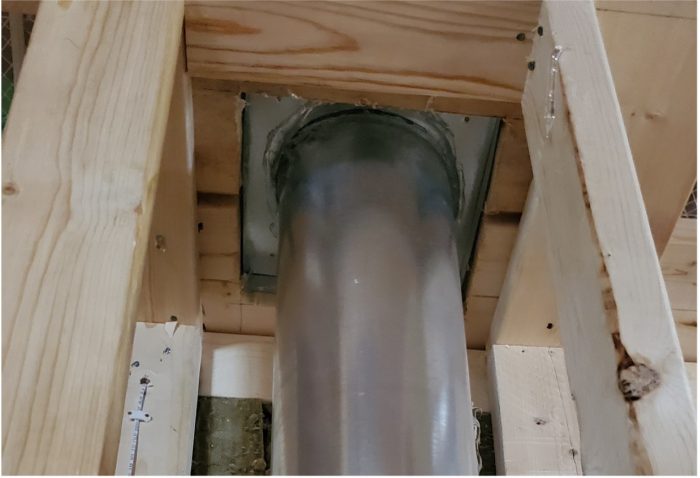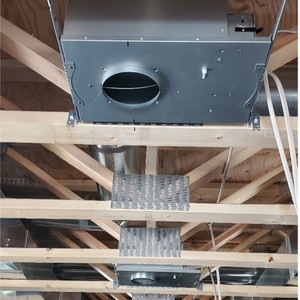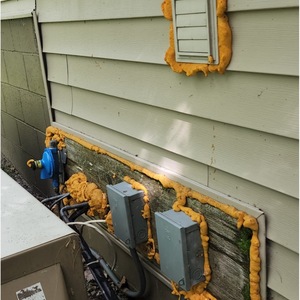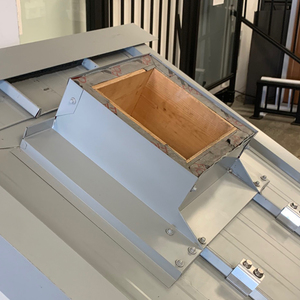
Many homes that are (or were) heated with wood, oil, or—back in the day—coal have (or had) masonry chimneys to transport the exhaust made from burning those fuels to outside the house. The chases used to hide these chimney systems are often areas of high air leakage. With the advent of modern heating equipment that burns natural gas and propane more efficiently, and systems that don’t use fossil fuels to produce heat, masonry chimneys have all but disappeared. I have been in many homes, including my own, where the use of this type of chimney system has been discontinued. Mine no longer extends through the roof; it terminates in the attic space. Others have been completely removed. Some homes being built today have chimney systems but the masonry chimney is rare; most builders install metal chimneys or use PVC vents.
Clearance to combustibles
All chimney systems—whether masonry or metal—require some sort of space between the chimney and any wood framing or insulation. This space is required to prevent a build-up of heat and potential fire. The amount of space needed depends on the chimney system used. For example, a B-vent (a double-wall metal vent commonly used for lower efficiency, fossil-fueled space and water heating) requires a 1-in. clearance from any combustible surface. A masonry chimney system and factory-built metal double- and triple-wall Class A chimney systems—commonly used for wood-burning appliances—require a minimum 2-in. clearance to combustibles.

Metal chimney systems
In my…
Weekly Newsletter
Get building science and energy efficiency advice, plus special offers, in your inbox.

This article is only available to GBA Prime Members
Sign up for a free trial and get instant access to this article as well as GBA’s complete library of premium articles and construction details.
Start Free TrialAlready a member? Log in















2 Comments
Are there any code or safety issues sealing with the high temp caulk between the metal double wall chimney and wood? The chimney installers are worried about that - granted they are way done the scale on professionally trained by what I can tell.
User...372,
Even insulated double-wall chimneys have a clearance (typically 2") from any wood. The only parts that can be attached to the framing are the ceiling or cathedral support, and above that the roof flashing. The ceiling/cathedral support can be air-sealed with high heat caulk.
Log in or become a member to post a comment.
Sign up Log in